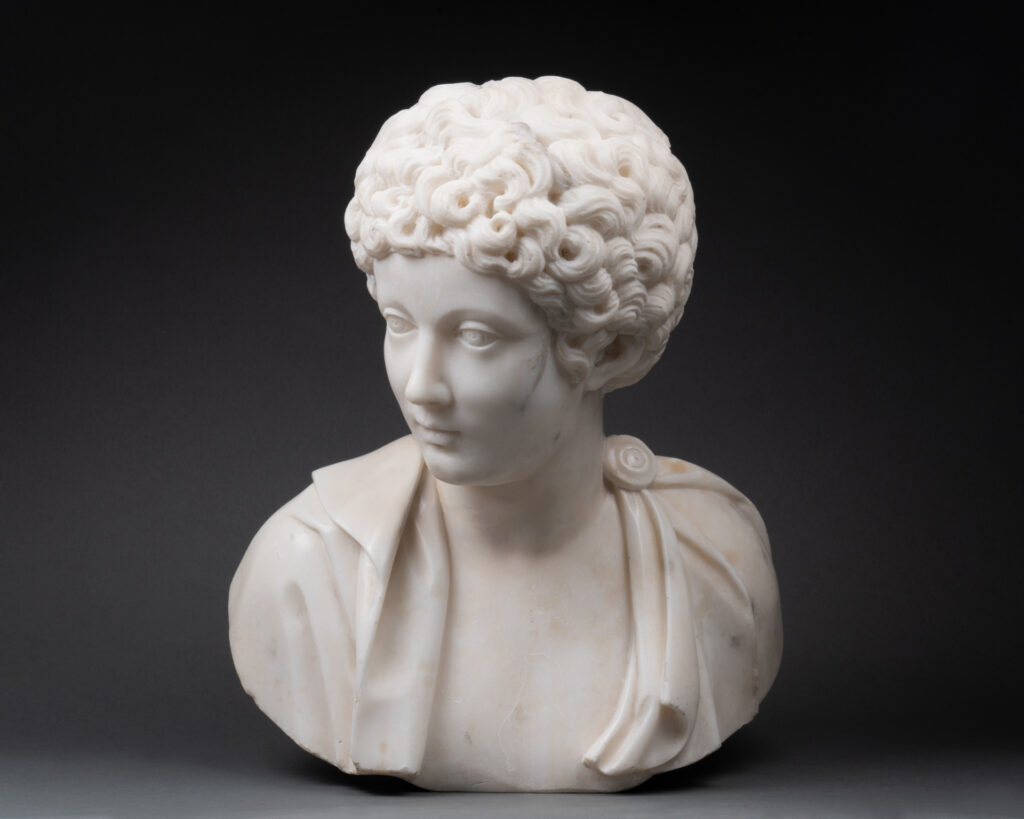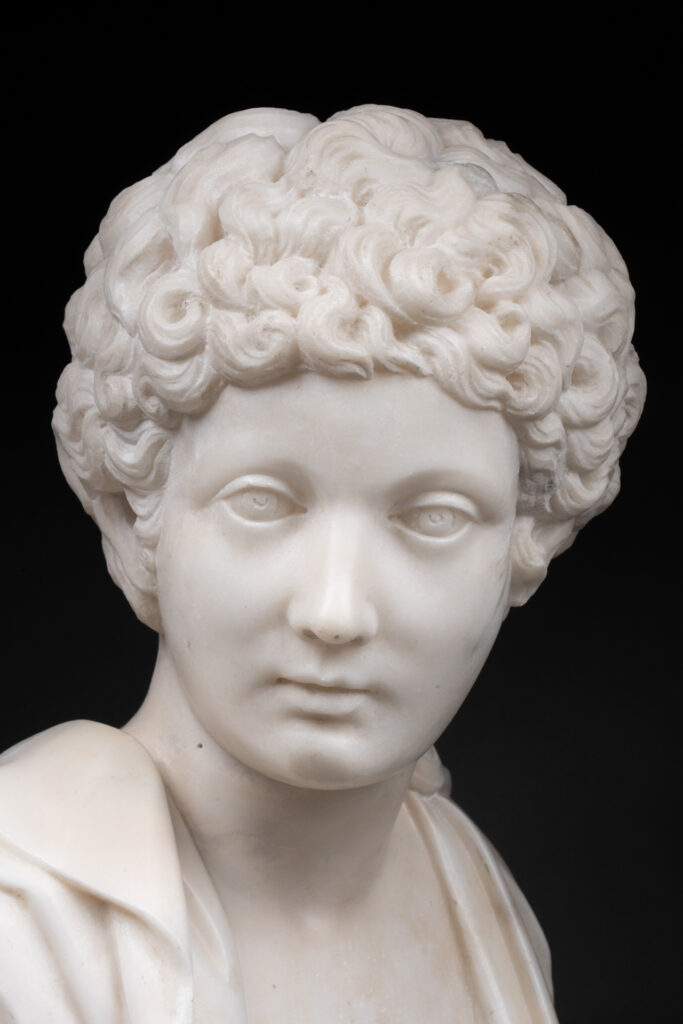This important marble bust depicts the young Roman emperor Marcus Aurelius.
We can attribute it to 18th-century French sculptor Jean-Baptiste Boudard, a specialist in classical sculpture.
Marcus Aurelius, emperor from 140, fought many wars during his reign, and a column was erected in honor of his victories in the heart of Rome. The latter bears a striking resemblance to the Trajan column on the Place Vendôme in Paris.
Concerning our work, its face is turned to the left, so it is ¾ face. His eyes are elongated and wide open, his mouth is slightly fleshy, but above all, it’s his curly hair that makes him recognizable. Its strands are superimposed one on top of the other, and volume is added to the whole using the bit technique, a kind of drill bit operated by hand with a bow. This tool has been used since Antiquity to reach recesses, clear parts that are difficult to access and rough out small diameter grooves by forming cylindrical cavities. Slow but precise, the drill bit is intended for very fragile places and hard materials such as wood, stone and marble. The trephine technique brings movement and depth to the whole.
His eyes are unusual in that, to form the pupil, the artist engraved half-circles instead of using the trepan technique and making hollow pupils as we can sometimes see on busts from this period. He wears a chlamydia tied with a round fibula, a clear indication of his future social status. This garment was related to militaria and was worn by Roman emperors.
J.B. Boudard was a French sculptor born in 1710, who developed a passion for the world of art at an early age. In 1732, he won the Prix de Rome and continued his career as a sculptor there. He even won the protection of the French embassy, as well as private individuals such as the Duc de St Aignan. One of his most important works was the production of marble for the garden of the Ducal Palace in Parma.
Because of Marcus Aurelius’ importance within the Roman Empire, it was compulsory to make a bust of him, so that everyone in the Empire could recognize him as the one with political and military power. A few centuries later, re-portraits of emperors once again became a favorite subject, which is why we can see a revival of this type of bust in the 18th century.



